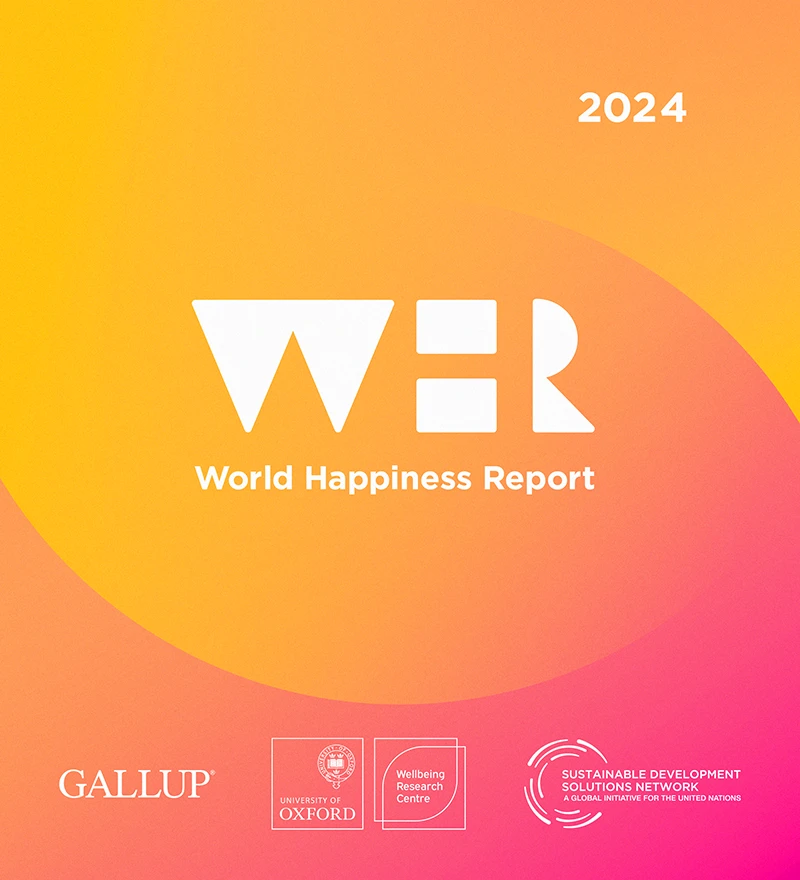Happiness Report: Significant Shifts
In the latest yearly UN-sponsored World Happiness Report, Finland has once again clinched the title of the world’s happiest country for the seventh consecutive year.
 The report, released on Wednesday, 20 March 2024 shows the continued dominance of the The Nordic countries in the top rankings, with Denmark, Iceland, and Sweden closely trailing behind Finland.
The report, released on Wednesday, 20 March 2024 shows the continued dominance of the The Nordic countries in the top rankings, with Denmark, Iceland, and Sweden closely trailing behind Finland.
Whereas Afghanistan finds itself at the bottom of the list among the 143 countries surveyed, grappling with ongoing humanitarian crises following the Taliban’s resurgence to power in 2020.
The rankings are based on self-reported happiness scores ranging from 0 to 10, collected through the Gallup World Poll’s sample data spanning from 2021 to 2023.
Notably, the latest report marks a significant shift as both the United States and Germany, for the first time in over a decade, have slipped out of the top 20 happiest nations, now ranking 23rd and 24th, respectively.
A new trend?
The report highlights a notable trend where the happiest countries no longer include any of the world’s largest nations. Within the top 10, only the Netherlands and Australia have populations exceeding 15 million. Moreover, Canada and the UK, both boasting populations over 30 million, are also notably absent from the top 20 rankings.
Significant shifts in happiness levels have been noted since the period between 2006 and 2010, with Afghanistan, Lebanon, and Jordan witnessing substantial declines, while Eastern European nations like Serbia, Bulgaria, and Latvia have seen notable increases.
The ranking of happiness is based on individuals’ self-assessed assessments of life satisfaction, coupled with various factors including GDP per capita, social support, healthy life expectancy, freedom, generosity, and corruption.

This year’s report also reveals a trend where younger generations generally report higher happiness levels compared to older age groups, except in North America, Australia, and New Zealand, where youth happiness has declined since 2006-2010.
Conversely, central and eastern Europe have witnessed happiness increases across all age demographics during the same period, while Western Europe maintains consistent happiness levels across generations. The report also raises concerns about rising happiness inequality globally, particularly among older individuals and in Sub-Saharan Africa, reflecting disparities in income, education, healthcare, and social support systems.
India at 126th
India maintains its position at 126 in the global happiness index, unchanged from the previous year.
Among older Indians, factors such as marital status, social engagement, and physical health significantly influence life satisfaction.
Notably, satisfaction with living arrangements emerges as a crucial factor, indicating a strong desire among older Indians to age in place while maintaining autonomy and social bonds.
Despite ranking second globally in terms of the older population, with over 140 million individuals aged 60 and above, India’s demographic growth rate outpaces the overall population growth rate threefold. However, understanding the factors shaping quality of life in old age remains imperative.
Happiness and Age: The Correlation
The report highlights that older Indian men, particularly those in higher age brackets and education levels, tend to report greater life satisfaction compared to their counterparts.
Dissatisfaction with living arrangements, perceived discrimination, and poor self-rated health are linked to lower life satisfaction among older Indians.
Contradicting the notion that age-related satisfaction is exclusive to high-income nations, life satisfaction among older adults in India displays a nuanced trend. While older women generally report lower satisfaction than men, factors such as education level and social caste play significant roles, with higher education and caste associated with greater life satisfaction.
Additionally, satisfaction with living arrangements, perceived discrimination, and self-rated health emerge as primary predictors of life satisfaction among older Indians.
Despite facing more stressors and health challenges, older Indian women tend to report higher life satisfaction, possibly due to broader social networks and increased social support.
Contrary to common belief, empirical studies suggest varied associations between age and life satisfaction, with some indicating increasing satisfaction with age due to factors like experience and adaptive strategies.











